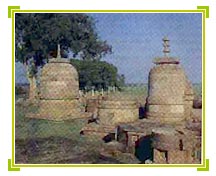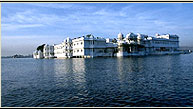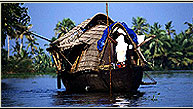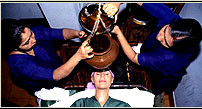-| Ratnagiri | -
Location: District Jajpur (Orissa) - Lat 20º 38'N, Long 86º
20'E

The Buddhist site of Ratnagiri is situated at distance of 100 kms. northeast
of Bhubaneshwar - the state capital of Orissa and about 21 kms. south of Jajpur,
the distt. Headquarter. The establishment is located on an isolated hill bound
on three sides by the rivers Brahmini, Kimiria and Birupa. It was a flourishing
buddhist centre from 5th century AD onwards, witnessing a phenomenal growth
of religion, art and architecture till 12th century AD. By the end of the 13th
century, the site suffered a serious setback largely due to Muslim invasion
in Eastern India. The excavation has brought to light huge remains of Buddhist
establishment consisting of stupas of various dimensions, two monastic complexes,
chaitya, large number of sculptures, seals and sealings. The richly carved ornamented
doorway of main monastery is perhaps the only of its kind in India. Ratnagiri
is rich in Buddhist sculptures of Mahayana and Vajrayana. Images of Tara, Jambhala,
Manjusri, Vasundhara, Heruka, Vajzapani, Dhyani and colossal Buddha heads are
noteworthy. Beside stone sculptures, a few bronze and brass images of Buddha
and Buddhist pantheon were discovered. Among the excavated remains, an impressive
monument is Stupa 1, called the main stupa, which was unearthed on the highest
part of the hillocks, towards its southwest corner. It has a circular drum constructed
on the plan of a wheel. The base is about 16 feet in height and has projections
on all the four sides in triratha pattern. The projection are relieved with
bold mouldings. The stupa was constructed in the 9th century AD over an earlier
stupa and is presently surrounded by large number of votive stupa of varying
dimensions.
To the north of the main stupa, on the mound locally known as Rani Pakhuri,
the remains of two quadrangular monasteries, lying side by side with a narrow
space in between and facing the main stupa, were also unearthed. The monasteries
termed as monasteries no. I and no. II are superimposed one above the other.
Among other finds that were brought to light, specially noteworthy are clay
and terracotta sealing, bronze objects and images and stone image very similar
to those unearthed from the monastic complex at Nalanda (Bihar). A large number
of clay sealing bearing the legend “Shri Ratnagiri Mahavihar Arya Bhikshu
Sangharya” have helped in identifying the name of Ratnagiri monastery.
From the nature of archaeological finds, it is clear that Ratnagiri was a great
centre of Buddhist tantricism during 8th to 12th century AD.




